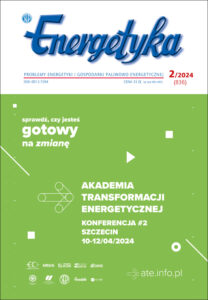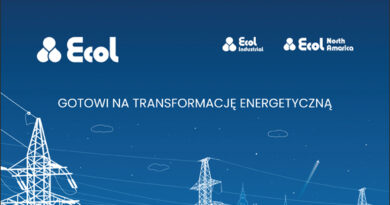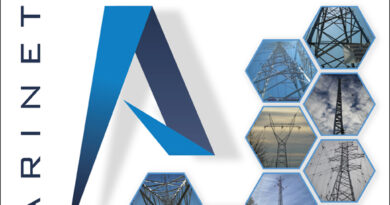February 2024, Issue 2 (836)
TABLE OF CONTENTS
Herbert Leopold Gabryś
Power industry in Poland 2024 – selected from among results and challenges
BULLETIN OF ENERGOPOMIAR
Rafał Czekalski, Andrzej Kochaniewicz
Carbon capture and management as elements of decarbonization of the power sector and industry – state of the art and development prospects
Piotr Plis
An energy model for the Capital City of Warsaw in the 2050 perspective – technical aspects of the model based on the concept of electroprosumerism
POWER ENGINEERING – SCIENCE – INDUSTRY
Henryk Majchrzak
Conference of the Polish Committee of the World Energy Council
“Prospects for the development of nuclear energy in the National Energy System”
THROUGH THE EYE OF A WORLD TRAVELER
Stefan Gierlotka
Power engineering in Birma
POWER ENGINEERING AND INTERESTING BOOKS
Bogumił Dudek
60 years of work under high voltage
SUMMARIES
Herbert Leopold Gabryś
Power industry in Poland 2024 – selected from among results and challenges
The paper is based on the data included in the report of the International Energy Agency in Paris IEA WORLD ENERGY 2023 (WEO2023). In variant considerations it is an indication of the way that the climate and energy policy of our EU community should follow. The way invariably ambitious and consequent, especially consequent despite the dramatic events over the last few years and in particular during the last several months. Though the fossil fuel prices have fallen somewhat after the shock growth in 2022, the energy markets remain unstable and the prices are still strained and vulnerable to external occurrences. Continuous fights in Ukraine are now accompanied by the threat of a long-term conflict in the Middle East and macroeconomic sentiments are negative. Such a state of affairs has significant influence on forecasts concerning the future of global electric power industry that is clearly seen in results of the last years. To be correct, a little bit differently in various regions of the world but similar in trends of changes though with different dynamics. It makes it a specific and worth noticing picture of challenges posed for energy industry also in Poland.
Rafał Czekalski, Andrzej Kochaniewicz
Carbon capture and management as elements of decarbonization of the power sector and industry – state of the art and development prospects
The article presents the state of the art in carbon capture and management. The first part of the article includes a review of available carbon capture technologies and highlights methods that have the greatest chance of commercial application in cement, refining, iron and steel, paper and power industries. The article presents model calculations made to assess the impact of the carbon capture facility on performance indicators of power units using the example of a 600 MW CCGT unit. The integration of CO2 capture with the CCGT unit is analyzed to determine energy consumption of the process and its impact on energy indicators of the unit. The calculation results are compared with the results of similar analysis (of different fossil fuel-fired power units) available in scientific publications. An attempt is made to estimate capital expenditures for construction of the CCS facility (excluding CO2 transport costs and variable costs) for the analyzed model of the CCGT unit integrated with CO2 capture. The second part of the article presents issues related to carbon management. In this context, two options are considered, i.e., underground injection (geological storage) and conversion into another valuable product. The final part of the article focuses on the most significant barriers to development of carbon capture and utilization, resulting mainly from the lack of precise legal regulations, very high economic costs and technical constraints.
Piotr Plis
An energy model for the Capital City of Warsaw in the 2050 perspective – technical aspects of the model based on the concept of electroprosumerism
The article presents a model of transformation of the power sector in Warsaw directed to climate neutrality which should be achieved by 2050. The model is based on the concept of electroprosumerism according to which electricity generated from renewable energy sources (RES) is the only energy carrier used by the end markets (electricity, heating and transport). The article also outlines technical aspects describing a future energy model for the Capital City of Warsaw.




